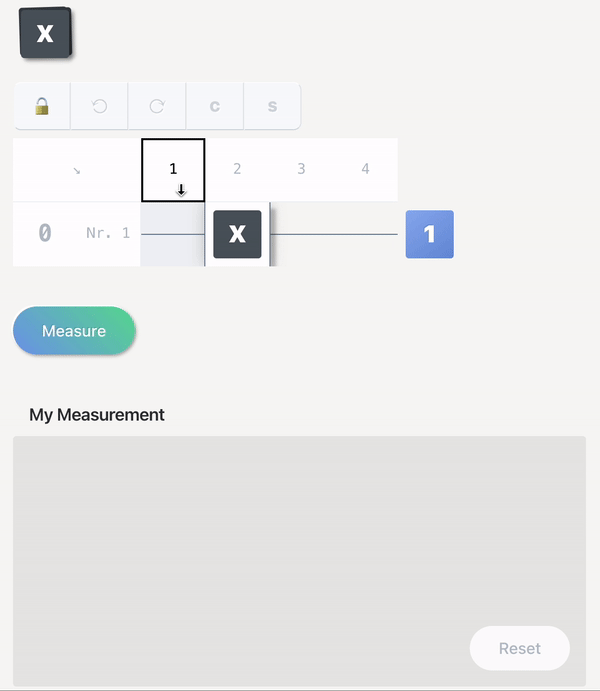From modern to quantum computing
While the computers on our desk follows the laws of classical physics and thus are sometimes also called classical computers, quantum computers follow completely different rules – those of quantum physics. Quantum physics stems from scientific discoveries that atoms and electrons behave completely differently than human-scale objects. But we will focus not so much on the physics side, but on how this behavior can be used in quantum computing.
Qubits
Instead of bits, the smallest unit of quantum information is the quantum bit or qubit. They are similar to bits in that there are two measurable states, often referred to with \(\ket{0}\) and \(\ket{1}\). However, there are also significant differences, which we will discover next.
To this end, we explore how we can manipulate qubits with a quantum computer. As with classical computers, we can
describe a quantum computer with gates acting on qubits. And by using and exploring these quantum gates, we will
learn more about qubits and the way quantum computers work.
We don't have an intuitive understanding of a qubit just now, but we will build one along the way!
X gate
Let's check out our first quantum gate.
• changing the input value from \(\ket{0}\) to \(\ket{1}\)
• and adding a second X-gate
and making one measurement each time.
The animation below shows how you can manipulate circuits and perform measurements in this course.

Hints
- Each line represents a qubit. Change the input values by clicking on the numbers at the beginning of a line.
- The different positions (1,2,3,4) a gate can be placed represent the different time steps a quantum computer can perform an operation.
- Perform a measurement by clicking on Measure.
- Use drag & drop to move, add or remove quantum gates.
My Measurement
-
A
The X gate behaves very similarly to the NOT gate from conventional computers.
-
B
The X gate transforms any input into \(\ket{1}\).
-
C
The X gate transform any input into \(\ket{0}\).
-
D
The output of the X gate is unpredictable.
Well done! The X gate behaves very similarly to the NOT gate from classical computers. It is sometimes even called the quantum NOT gate.
Not quite! The X gate behaves very similarly to the NOT gate from classical computers. It is sometimes even called the quantum not gate.